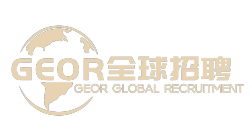Global Product Innovation Leader Recruitment: Driving Brand Internationalization Breakthrough
Global Product Innovation Leader Recruitment: Driving Brand Internationalization Breakthrough
In the context of increasingly fierce global competition, if enterprises want to occupy a place in the international market, they need to rely on professionals with cross-cultural insight and product innovation ability. As the core executor of brand globalization strategy, overseas product managers need to promote the landing and iteration of products in the global market through accurate market demand analysis, localized product design and efficient cross-team collaboration. They are not only the planners of product functions, but also the bridge between brands and global consumers, helping enterprises to realize the leap from "localization" to "globalization.
deep localization needs insight to create products that fit the market
successful international products need to take into account brand core values and localization needs. Overseas product managers need to have keen market analysis skills to identify core pain points and opportunities in the target market through user research, competition research and cultural background research. For example, in the European and American markets, consumers pay more attention to the privacy protection and data security of products, and product functions need to highlight compliance and transparency; while in the Southeast Asian market, price sensitivity and social sharing demand are high, and products need to be cost-effective and social Interactivity is optimized. This "global vision, local landing" product design capabilities can significantly enhance the competitiveness of products in overseas markets.
Cross-cultural communication and collaboration to integrate global resources
Overseas product managers need to work closely with headquarters R & D, local operations, design and marketing teams to ensure consistency in product strategy and execution. They need to have excellent cross-cultural communication skills, not only can accurately convey the brand strategic intention, but also can coordinate local team resources to solve the implementation barriers caused by cultural differences. For example, in product naming and visual design, brand tonality and local cultural taboos need to be balanced; in functional prioritization, global standardization needs to be balanced with local customization needs. This collaborative ability of "global thinking, localized execution" helps brands establish an efficient product development process in overseas markets.
Data-driven decision-making and continuous optimization of product experience
The international market environment is complex and changeable. Product managers need to rely on data analysis tools to monitor user behavior, market feedback and competitive dynamics in real time. They can optimize product functionality and user experience through A/B testing, user profile analysis, and other means. For example, in markets with low user retention, adjust the interface design or add guidance functions by analyzing churn nodes; in areas with insufficient payment conversion rates, optimize the payment process or access local mainstream payment methods. This data-driven decision-making capability ensures that products remain competitive in the global marketplace.
respond to market changes quickly and iterate products quickly
policies and regulations, technology trends and consumer preferences in overseas markets are updated quickly, so product managers need to have agile adaptability. They are able to capture market signals and adjust product roadmaps and development plans in a timely manner. For example, when a region introduces new privacy protection regulations, quickly assess product compliance and develop adjustments; when emerging technologies such as AI or blockchain are popular in a market, explore the possibility of integrating them into product functions. This dynamic adjustment ability helps brands to seize opportunities in overseas markets.
Global vision and long-term planning drive continuous product growth
Overseas product managers not only need to pay attention to short-term market performance, but also need to have long-term strategic planning capabilities. They need to develop product lifecycle management strategies in conjunction with brand globalization goals to ensure that products remain competitive in different market stages. For example, during the product introduction period, seed users are rapidly accumulated through localized marketing and user education; during the growth period, market share is expanded through functional iteration and ecological cooperation; and during maturity, market position is consolidated through differentiated innovation and user experience upgrades. This "global planning, step-by-step implementation" ability can establish a sustainable growth model for brands in overseas markets.
With the deepening of global trade and the diversification of consumer demand, the demand for professionals with international product management capabilities will continue to expand. For product managers who are interested in displaying their talents on the international stage, this is a field full of challenges and opportunities. By accumulating practical experience, enhancing cross-cultural competence, and maintaining a keen insight into global trends, they will become important drivers in the process of brand globalization.
Whether it is a start-up or a multinational group, having a team proficient in international product management will become its core competitiveness in expanding the global market. In the future, with the iteration of technology and the evolution of consumer behavior, the value of such professionals will be further highlighted, creating a broader growth space for the brand.
